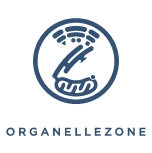A02-1

Investigation of the sorting transport zone involved in protein quality control in the endoplasmic reticulum
Research abstract
The endoplasmic reticulum (ER), where newly synthesized secretory and transmembrane proteins are folded and assembled, has the ability to discriminate folded proteins from unfolded proteins and controls the quality of synthesized proteins strictly. Only correctly folded molecules are allowed to move along the secretory pathway, whereas unfolded proteins are retained in the ER and eventually degraded by the ubiquitin-proteasome system in the cytoplasm. Such sorting function in the ER plays an important role not only in protein synthesis under normal conditions but also in cellular stress response. The ER membrane-bound transcription factor ATF6 we identified is an unstable protein with a half-life of 2 h, but is transported to the Golgi apparatus in response to the accumulation of unfolded proteins in the ER (ER stress), and is then activated via proteolysis by Golgi-resident proteases, resulting in transcriptional induction of genes involved in the protein quality control in the ER. Because ATF6 is transported from the ER to the Golgi apparatus only under ER stress conditions, its selective transport is clearly distinct from general transport of cargo proteins, and is considered to be carried out in its specific sorting transport zone. Indeed, we found characteristic localization pattern of ATF6 in the ER. In this project, we intend to visualize the sorting zone responsible for ER stress-dependent transport of ATF6 and the zone responsible for degradation of ATF6 under normal conditions. We also intend to reveal the mechanism of respective zone formation.
Original papers
- Ishikawa, T., Toyama, T., Nakamura, Y., Tamada, K., Shimizu, H., Ninagawa, S., Okada, T., Kamei, Y., Ishikawa-Fujiwara, T., Todo, T., Aoyama, E., Takigawa, M., Harada, A., and Mori, K. (2017) UPR transducer BBF2H7 allows export of type II collagen in a cargo- and developmental stage-specific manner. J. Cell Biol. 216, 1761-1774
- Ninagawa, S., Okada, T., Sumitomo, Y., Horimoto, S., Sugimoto, T., Ishikawa, T., Takeda, S., Yamamoto, T., Suzuki, T., Kamiya, Y., Kato, K., and Mori, K. (2015) Forcible destruction of severely misfolded mammalian glycoproteins by the non-glycoprotein ERAD pathway. J. Cell Biol. 211, 775-784
- Ninagawa, S., Okada, T., Sumitomo, Y., Kamiya, Y., Kato, K., Horimoto, S., Ishikawa, T., Takeda, S., Sakuma, T., Yamamoto, T., and Mori, K. (2014) EDEM2 initiates mammalian glycoprotein ERAD by catalyzing the first mannose trimming step. J. Cell Biol. 206, 347-356
Reviews
- Mori, K. (2015) The unfolded protein response: the dawn of a new field. Proc. Jpn Acad. Ser. B 91, 469-480


